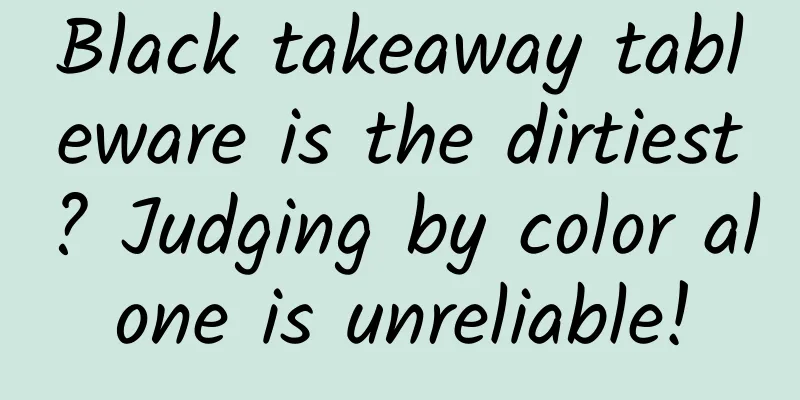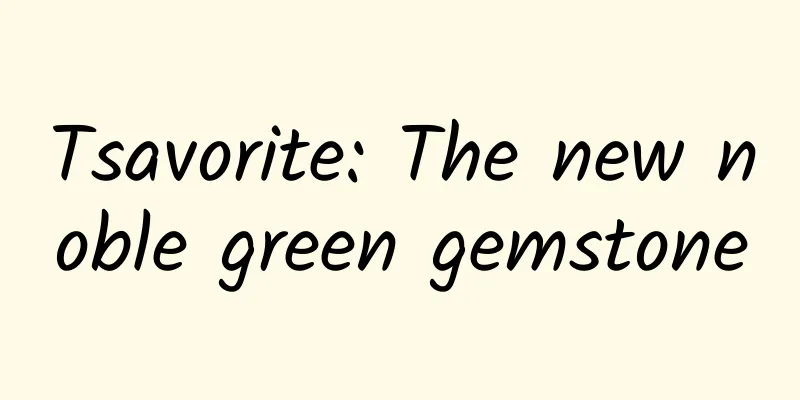Black takeaway tableware is the dirtiest? Judging by color alone is unreliable!

|
gossip “Black plastic cutlery is the dirtiest” There is news online saying that #black plastic tableware is the dirtiest# which has sparked heated discussions among netizens. Some people claim: "Black disposable spoons are made from recycled waste plastics and contain all kinds of ingredients" and "the higher the transparency of the plastic, the safer it is"... Rumor Analysis This statement is not rigorous enough. The safety of plastic products made from recycled plastics has nothing to do with color. Rather than color, we should pay more attention to related labels and whether there is any odor. Some time ago, the topic of " black takeaway spoons are the dirtiest " was once again on the hot search. According to some so-called "experts in the field", "black disposable spoons are made from recycled waste plastics and contain all kinds of ingredients" and "the higher the transparency of the plastic, the safer it is"... The picture comes from the Internet Are these statements really true? Today, I will explain it to you from three aspects~ Recycled waste plastic Where are you coming from? Where are you going? Plastics can be divided into thermosetting plastics and thermoplastics based on their behavior when heated. As the name implies, thermosetting plastics remain solid when heated, while thermoplastics become liquid when heated. Just as iron can be turned into molten iron when heated, thermoplastics can be injected back into molds or processing equipment and reshaped after being heated into liquid form. Therefore, discarded thermoplastic products can be processed into products again through processes such as sorting, cleaning, crushing and melting. This is recycled plastic products, also called recycled plastics. Because it is difficult to determine the types and amounts of pollutants that recycled plastics have been exposed to during their initial use, and therefore difficult to determine whether the residual pollutants inside them can be reduced to meet food safety standards after being processed into plastic products, recycled plastics are usually used to manufacture building materials, pipeline materials, industrial production consumables, and other fields that do not have high requirements for residual pollutants. In the last century, countries around the world generally expressed clear opposition to the use of recycled plastics in the production of food contact materials. Later, with the continuous development of plastic recycling technology and the improvement of evaluation and testing methods, recycled plastics represented by PET can be used as food contact materials in the United States, the European Union, Japan and other countries or regions on the premise of obtaining legal recognition and complying with regulatory requirements. However, the current laws in China and most countries do not clearly stipulate whether recycled plastics can be used for the recycling and production of food contact products. In 2022, an article written by the China Agricultural Food Standardization Institute titled "Regulatory Strategies for Primary Recycling of PET Bottles for Food Abroad and Their Implications for my country" mentioned that China should refer to the laws, regulations, standard documents and testing methods of Europe, the United States and Japan, and establish a risk assessment system for recycled PET in my country based on a large amount of experimental data, and gradually formulate national food safety standards for domestic recycled PET materials. Is black plastic really harmful? Back to the question of black plastic cutlery. Usually, recycled plastics have a poor appearance after mixing due to their diverse sources, so dark colorants such as carbon black are added to improve the appearance. However, this does not mean that black plastics are necessarily recycled plastic products, nor can it be said that transparent or other colored plastics are necessarily better than black plastics. In addition, black can only be used for dyeing, and cannot cover up the odor of inferior plastics. Image source: Yantian District Health Bureau No, a news report in 2022 showed that after sampling a batch of disposable lunch boxes, the Jiangsu Provincial Quality Inspection Institute found that colored plastic lunch boxes may discolor, and white or pink powder will precipitate during the experiment. Therefore, the Jiangsu Quality Inspection Institute recommends consumers to choose transparent and colorless PP plastic tableware as much as possible. Summary and suggestions Therefore, you don’t need to worry too much about eating food served in black plastic tableware. When using this type of plastic tableware in daily life, you can pay more attention to whether there is a label and whether the material marked is a permitted material. If you find that the plastic tableware has a pungent smell or an abnormal appearance, you should also discard it in time and complain to the business. Finally, take this comparison table of common plastic products and use them with more confidence~ Coding Name Application Examples Notes PET "No. 1" polyethylene terephthalate mineral water bottles, carbonated beverage bottles, mobile phone films, etc. are not resistant to high temperatures, are easily deformed above 70°C, and will release toxins. They cannot be recycled, cannot be filled with hot water, cannot be placed in the sun in the car, and cannot be filled with wine, cooking oil, etc. The surfaces of HDPE "No. 2" high-density polyethylene plastic food bags, shopping bags, detergent bottles, etc. are difficult to clean and easily breed bacteria. They are not recommended for recycling in food and medicine. PVC "No. 3" polyvinyl chloride is commonly used in raincoats, sockets, water pipes, credit cards, etc. It is not a food grade material and should not be recycled. It is not recommended to heat LDPE "No. 4" low-density polyethylene cling film, plastic film, etc. in the microwave. PP "No. 5" is the only plastic among polypropylene food storage boxes, lunch boxes, plastic water cups, baby bottles and other products that can be heated in the microwave. PS "No. 6" polystyrene is often used in foam packaging boxes, instant noodle boxes, foam packaging materials, etc. It cannot be put into the microwave, and avoid packaging food with too high a temperature. OTHER "No. 7" other types of resin, common types include polycarbonate (PC), styrene-acrylonitrile copolymer (SAN), etc., which are often used in products such as kettles, cups, and baby bottles. Do not heat them when in use and do not expose them to direct sunlight. Looking in the mirror of rumors "Disposable tableware is black → black dye is added → to cover up waste", this reasoning seems rigorous, but it has a lot of loopholes. If we often rely on "common sense inference" in our lives, we will easily be full of doubts and add anxiety. In this regard, it is better to learn about the relevant knowledge and focus on what is really important. Author: Cao Wangbei, Materials Engineer Review丨Wang Wen, Associate Professor of Tianjin University of Technology, Environmental Toxicology Expert |
<<: If you can’t get tickets for May Day, why don’t you add a few more night high-speed trains?
>>: There are only a few days left! Have you eaten this year's spring vegetables?
Recommend
Grasp 20 human weaknesses and you will be an operation master
What weakness marketing does is to lead people to...
If a black hole came to the solar system and ate up the sun, would the planets still exist?
This article is based on answering a question fro...
Double Eleven "Building Activity" Addictive Model!
Late October to early November is an unstable per...
Why does the oil in the pan turn into "black charcoal"? See through the "black magic" in the oil pan
Why does black smoke appear when the oil pan is h...
China Automobile Dealers Association: China's auto dealer inventory warning index is 49.5% in June 2022
On June 30, 2022 , the latest issue of the "...
The development of resources across the entire solar system requires these new technologies!
Recently, Chinese aerospace experts proposed a ro...
Watching 300 Douyin videos a day made me rethink Toutiao
Douyin has become a hot commodity. Compared with ...
Well-known APP marketing director teaches you: How to plan an efficient marketing operation plan
What? Reading and understanding this article can ...
What are the functions of the Guangzhou Insurance Mini Program? How much does it cost to develop a WeChat insurance mini program?
Not long ago, a colleague of mine bought another i...
360, QQ, and UC are in a battle to see which Android browser is better for grabbing train tickets during the Spring Festival travel rush?
The first day of the Lunar New Year will arrive o...
A long-standing question: Can mobile hard drives and USB flash drives be hot-swapped? | Digital Literacy
Audit expert: Zheng Yuanpan Professor of Zhengzho...
Eating seafood and finding pearls at sky-high prices?! Do I still have a chance?
From time to time, we see in the news that people...
What is the essence of bidding promotion?
The promotion effect is abnormal, the data is uns...
Startups need to clarify these 6 issues before they can do a good job of data-driven operations!
Data analysis is only taken seriously in some part...
Foreign online earning projects: once and for all, earn over 100 US dollars a day through pipeline income
Today I will share a foreign online earning proje...


![[Creative Cultivation Program] The small world in the intestines is also full of blood and gore. How can we eat well to help intestinal probiotics take over?](/upload/images/67f257e8a72f8.webp)






